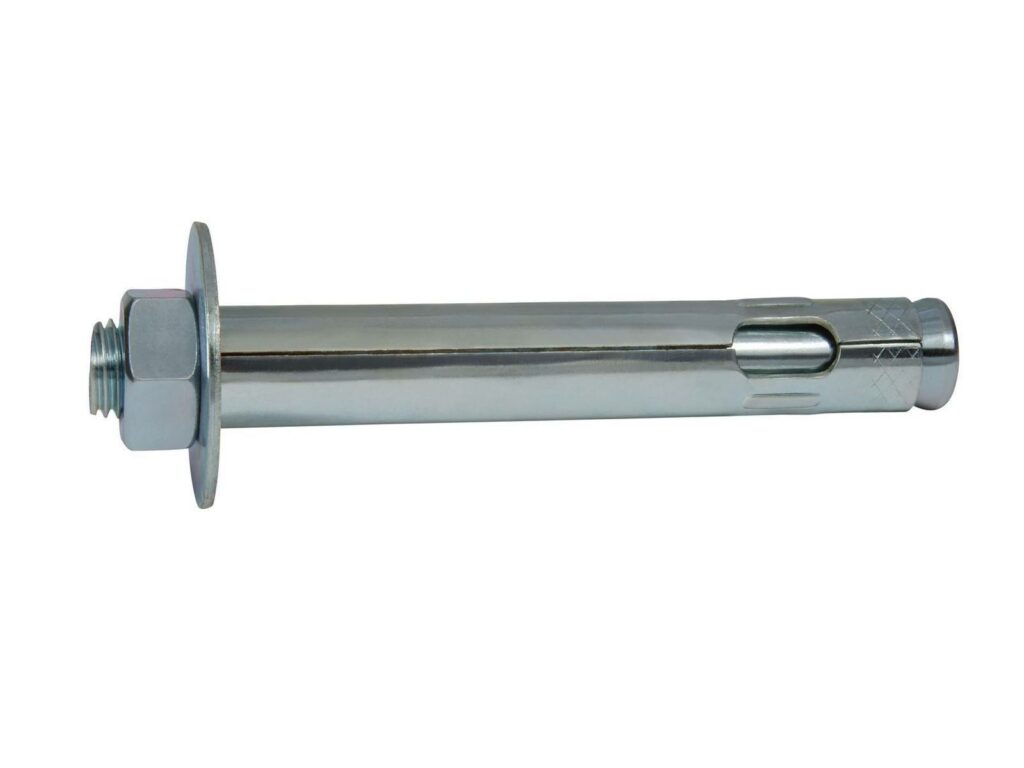Whenever a DIYer wants to attach an object to a concrete or masonry surface, the amount of work increases considerably from tasks that involve drywall or simple wood surfaces. As such, special tools, hardware, and techniques are all necessary to accomplish the job.
While there are many types of concrete anchors available today, determining which products are the best masonry anchors for each project can be a challenge by itself. Discussed below are two of the more common fasteners found in the masonry field: Sleeve Anchor vs. Wedge Anchor.
Both sleeve anchor and wedge anchor look like they do the same thing; expand and wedge in a hole in the concrete. But what is the difference between the two? Is one better than another? Or what conditions are each used for?
Table of Contents
Sleeve Anchor Vs Wedge Anchor: Application
Different types of anchors are meant for different applications. Some are made to be extremely strong while others are made to be more versatile and fairly simple to use.
A wedge anchor is simply a mechanical type expansion that comprises four parts; the threaded anchor body, an expansion clip, a nut, and a washer. Wedge anchors provide the highest and most consistent holding values of any mechanical type expansion anchor.
These types of anchors get their best and most assured holding power and strength from being installed into solid concrete. They are poured concrete and heavy-duty applications such as anchoring the wooden structure to the foundation.
Sleeve anchors, on the other hand, are more versatile and can be installed into concrete, brick, or block. This, however, comes at the cost of a weaker holding power compared to the more dedicated wedge anchor.
They are somewhat lighter duty but on the bright side, they have the advantage of anchoring to mortal, brick, and block where wedge anchors are not recommended.
Sleeve anchors can be applied in projects such as fixing radiators in your home and for much larger operations such as securing the joists of decking.
Similar to wedge anchors, sleeve anchors serve through the expansion of their wedges; tightening the nut pulls the stud end into the expander sleeve, wedging it outwards and locking the anchor into the base material, wedging the whole thing in place.
What’s the Strongest Concrete Anchor?
Wedge Anchors are extremely popular and are considered to be among the strongest anchors when it comes to holding power. They look and function like a sleeve anchor but come with a much smaller sleeve near the base of the anchor.
Wedge anchors feature all stainless steel construction, making them highly corrosion resistant and durable, perfectly usable for any masonry application, including underwater installations and dry settings both indoors and out.
Sleeve anchors, meanwhile, are fairly simple and are mainly used in brick or block. Well, they can be used in concrete but are not considered as strong as wedge anchors. Thus, for light and medium holding applications, sleeve anchors can be an excellent choice.
Note that there are two common types of sleeve anchors; the Nut Drive which is usually used for extra strength and the Slotted/Phillips Combo Driven Flathead which comes in handy when a flush surface is required.
The amount of weight sleeve anchors can support depends largely on the anchor’s size and the material it is being fastened into. Sleeve anchors generally fall into the medium-duty territory (or up to 200 pounds of weight that can be secured safely). It’s important to consult anchors’ specifications to see if they have enough holding power for your needs.
So while wedge anchors provide the highest and the most powerful holding values, sleeve anchors are by far the most versatile fasteners and can be utilized in a plethora of projects, including those that involve concrete as the base material.
Even though both make an excellent choice for certain applications, take note that their efficiency is often directly linked to a proper installation. Moreover, a correct installation isn’t the only concern associated with installing these anchors into concrete, as you’re about to find out!
Sleeve Anchor Vs Wedge Anchor: Installation
To install a wedge anchor, you’ll need to drill a hole that is the same size as the anchor and set it into the hole. Once you’ve placed the material being held to the concrete on the exposed portion, put the washer and thread the fastener onto the anchor.
As you tighten the nut against the washer, it will, in turn, pull the anchor up. This will cause the wedge skirt to catch the concrete and expand, digging into the concrete as the anchor is pulled.
When installing a wedge anchor, it’s recommended to have at least 2 ½ inches embedded into the concrete. There should also be a minimum of an inch exposed, enough for the attaching materials to grab onto.
To install a sleeve anchor (the nut-driven style) make a hole and place the sleeve anchor into the hole. Then set the washer and nut onto the exposed threading and start fastening the nut. As the anchor is pushed up out of the concrete, the sleeve around it will start to expand, wedging the anchor into place inside the hole.
The same process is applicable when installing the Combo Flathead style; except that you’ll be using a Phillips drive and that the installation will leave the top flush with the surface of the installation material.
In any case, the strong bond between the part and the concrete is enhanced by friction. The key to making sure you get a solid bond between the material and anchors is to drill a hole of the right diameter and depth. If the hole is too deep wide, then there’s a fair chance the anchor will come loose in time, which could lead to serious problems.
Sleeve Anchor Vs. Wedge Anchor: Minimum Length/Depth
The minimum length to use for a sleeve anchor depends on the material’s thickness to be fastened to the minimum embedment for the diameter of the anchor being employed. Check the summary below for minimum embedment depths for various diameter sleeve anchors:
| Diameter | Minimum Embedment Depth |
| 5/16″ | 1-7/16” |
| 3/8″ | 1-1/2″ |
| 1/2″ | 2-1/4″ |
| 5/8″ | 2-3/4″ |
| 3/4″ | 3-3/8″ |
With a wedge anchor, however, the rule of thumb is that the space for the nut and washer should equal the diameter of the wedge anchoring being employed.
For instance, if a 2 x 4 is being fastened to concrete with a half-inch wedge anchor then the minimum length of the wedge should be 1-1/2” (2 x 4) + 2-1/4” (minimum embedment) + 1/2 inches (space for nut and washer) = 4-1/4”.


